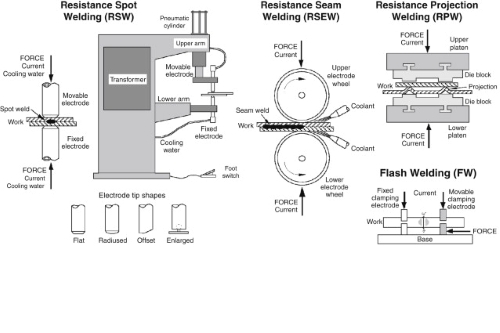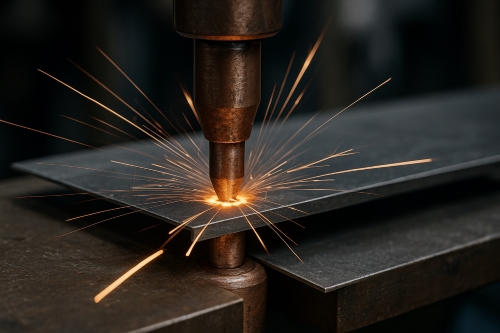Common Marine Grade Metals
Causes of Marine Corrosion
Corrosion in marine environments is primarily caused by seawater and moisture. The salt reacts with metal surfaces almost immediately. Water exacerbates the situation. Chemical impurities in the water contribute to the complexity. Corrosion shortens the lifespan of equipment. The issue begins with small surface cracks that allow salt penetration. Sunlight and heat accelerate the reaction. Continuous exposure results in increased damage. Maintenance and appropriate selection of metals can mitigate these problems.
Forms of Corrosion in Seawater Environments
Corrosion in seawater environments manifests in several forms.
Uniform corrosion occurs uniformly over the entire surface.
Pitting corrosion creates tiny pits and is difficult to detect.
Crevice corrosion develops within joints and narrow spaces.
Galvanic corrosion occurs when two different types of metals come into contact in the presence of seawater.
Stress corrosion results from a combination of stress and corrosive environments.
Each of these categories has a set of signs and hazards. Awareness of these helps in selecting suitable materials for specific applications.
Factors for Choosing Marine Grade Metals
Selecting the right metal is essential. The metal must be resistant to salt and moisture. It needs to be strong and durable. Cost is also a consideration. The ease of fabrication and joining methods is important. The intended use of the metal varies significantly. For example, a structure built in shallow water presents different risks compared to one constructed several miles offshore. Durability and maintenance frequency are critical considerations. Achieving the right balance between these factors ensures a safe and long-lasting marine facility.
Stainless Steels (316, 317, 2205 Duplex)
Stainless steels are extensively employed in marine applications. Grade 316 stainless steel provides good corrosion resistance. Grade 317 offers additional resilience in the most challenging conditions. 2205 Duplex stainless steel is known for its high strength and outstanding resistance. These materials are used in piping, fasteners, and structural components for numerous coastal and offshore installations. These steels maintain their strength in saline environments, satisfying standard tests and requirements. The grades (316, 317, 2205) indicate differences in the composition of the alloys, allowing them to function effectively in the most demanding marine conditions.
Nickel-Based Alloys (Inconel 625, Monel 400)
Nickel-based alloys are optimal when subjected to high temperatures and corrosive substances. Inconel 625 contains a blend of nickel, chromium, and molybdenum designed to counteract corrosion. Monel 400 exhibits high resistance in seawater. Both alloys are commonly used in marine pumps, valves, and marine heat exchangers. Their reliability has made them a preferred choice among engineers. The corrosion resistance and strength are well-balanced in the alloy's composition.
Copper and Copper Alloys (C70600, C71500 Naval Brass, Aluminium Bronze)
Copper and copper alloys are utilised in marine structures requiring strength and antimicrobial properties. C70600 and C71500, or Naval Brass, are applied in shipbuilding and seawater applications. Aluminium Bronze offers excellent toughness and superior resistance to saltwater corrosion. These alloys are commonly employed in seawater systems, propeller shafts, and fittings for vessels. Their unique attributes help minimise biofouling. Technicians have noted that the inherent tendency of copper alloys to inhibit growth extends the lifespan of systems. Their performance has enabled composite material manufacturers to regard them as reliable options for many years.
Aluminium Alloys (5083, 5052, 6061-T6)
Aluminium alloys are lightweight yet robust. The 5083 alloy is widely used in ship structures due to its good resistance to seawater. The 5052 alloy permits good formability and weldability in boat structures. Alloy 6061-T6 is a general-purpose alloy, used for structural components, supporting frames, and other boat parts. These alloys provide an excellent strength-to-weight ratio. Their application is common when weight reduction is critical. Pressure test performance has been verified under real-world conditions. The diverse marine applications of these alloys are evidenced by decades of practical use. For further corrosion-resistant materials, please refer to Stanford Advanced Materials (SAM).
Frequently Asked Questions
F: Why does corrosion occur in marine environments?
Q: Salt, water, and contaminants present in water cause corrosion of metals.
F: Why are marine grade metals corrosion-resistant?
Q: They comprise specialised combinations of alloys that exhibit high resistance to salt and moisture.
F: Do these metals vary in price?
Q: Yes, pricing depends on the composition and intended application.

 Bars
Bars
 Beads & Spheres
Beads & Spheres
 Bolts & Nuts
Bolts & Nuts
 Crucibles
Crucibles
 Discs
Discs
 Fibers & Fabrics
Fibers & Fabrics
 Films
Films
 Flake
Flake
 Foams
Foams
 Foil
Foil
 Granules
Granules
 Honeycombs
Honeycombs
 Ink
Ink
 Laminate
Laminate
 Lumps
Lumps
 Meshes
Meshes
 Metallised Film
Metallised Film
 Plate
Plate
 Powders
Powders
 Rod
Rod
 Sheets
Sheets
 Single Crystals
Single Crystals
 Sputtering Target
Sputtering Target
 Tubes
Tubes
 Washer
Washer
 Wires
Wires
 Converters & Calculators
Converters & Calculators
 Write for Us
Write for Us
 Chin Trento
Chin Trento



